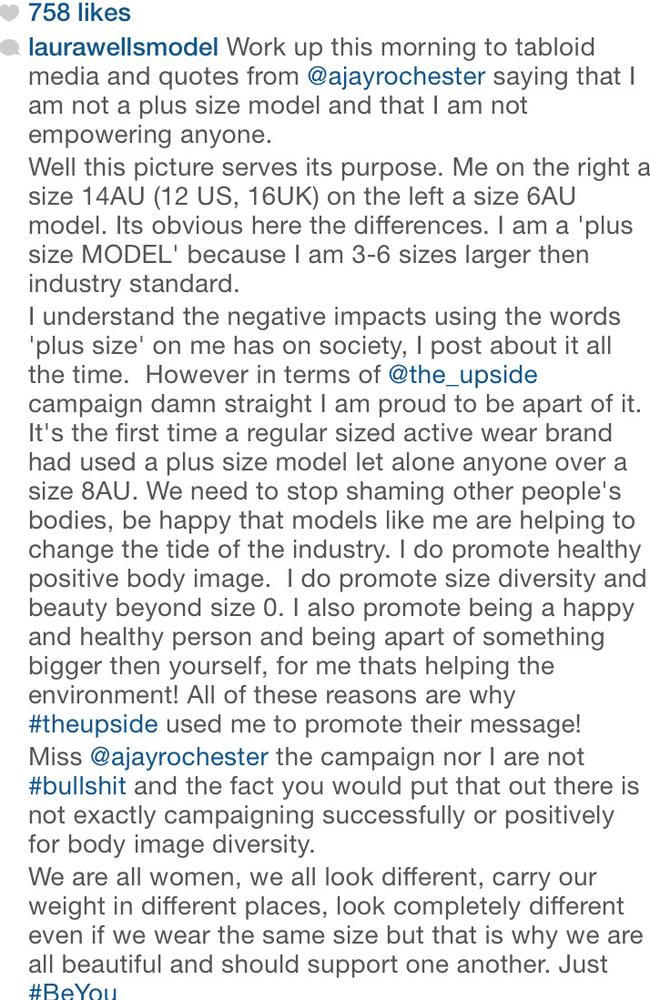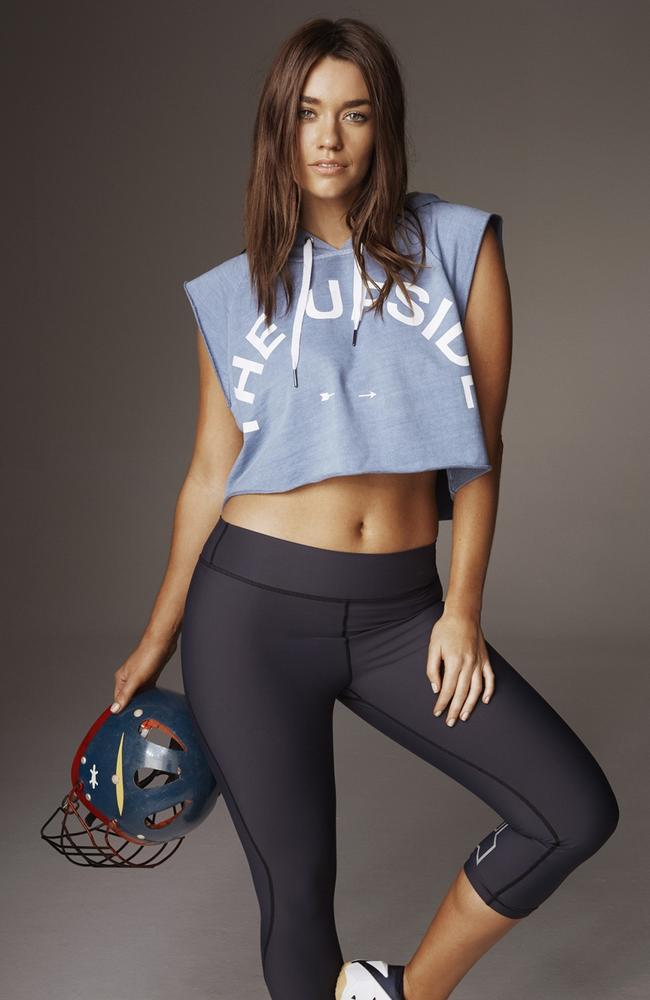Why are we still using the term ‘plus-size’?
THIS model is a size 14, the same size as the average Australian woman. Yet she is labelled ‘plus-size’ by the modelling and fashion industries.

MODEL Laura Wells is a size 14, the same size as the average Australian woman.
She markets herself as a ‘plus-size’ model and is represented by BGM Models, a modelling agency for models between sizes 10 and 18.
“I’m called a plus-size model because in the modelling industry I am between 3-6 sizes larger than a normal, industry standard model. It’s a job title,” Wells told news.com.au earlier this month.
She’s currently starring in an ad campaign for Aussie activewear label The Upside.
“But in the real world, I’m not a plus-sized person. People don’t look at my body and think I’m plus sized. They think that I’m normal, because I am. That’s where the confusion comes about.”
Confused and angry is how millions of Australian women feel about the phrase ‘plus-size’.
They lit up social media this week when former The Biggest Loser host Ajay Rochester posted a photo of Wells to Instagram with this caption:
“How the f*** can this woman be considered plus size? Any idea the kind of damage you (the media/fashion industry) do to the minds of young girls by even using those words with a picture like this? Where is there PLUS of anything? Anything less of her and she’d be a MINUS something. Seriously this is so ridiculous and harmful! This is not empowering ...”

Wells then responded with this post:


The hashtag #droptheplus started trending on social media and several models got on board, publicly denouncing the term ‘plus-size’.
‘I am a model FULL STOP. Unfortunately in the modelling industry if you’re above a US size 4 you are considered plus size, and so I’m often labelled a ‘plus size’ model,” wrote Melbourne model Stefania Ferrario.
“I do NOT find this empowering ... Let’s have models of all shapes, sizes and ethnicities, and drop the misleading labels. I’m NOT proud to be called ‘plus’, but I AM proud to be called a ‘model’, that is my profession!”

When she spoke to news.com.auearlier this month, Wells acknowledged the term ‘plus size’ can be damaging for women who are desperate to see images of themselves reflected in advertising and the media.
“I really do see the negative connotations [the term] can have on young women, because they’re looking to find themselves replicated in models.
“They’re looking at the media, at magazines, television shows, ad campaigns. So when someone my size is called ‘plus size’, and they compare themselves to me, it’s not great.
“My body is relatable and aspirational to a lot of people. There are a lot of models that we see everyday in magazines and high fashion and it’s not always achievable for a lot of people to look like that. People say, ‘Oh I can’t look like that’. So it’s great for women to see an average sized body in a campaign.”

Editor of Cosmopolitan magazine Brownyn McCahon says what was once purely an industry term has now weaseled its way into our everyday lexicon.
“We use the term ‘plus size’ internally here at Cosmo because it’s how the industry understands it. But it’s the most frustrating thing for us.
“We have no trouble getting clothes in sample sizes for models who are a size 6-8. It’s really hard for my fashion editor to find clothes that fit girls sizes 14-16 and larger.
“Personally, I don’t like [the term ‘plus-size’] because that’s like saying 90 per cent of the Cosmo office is plus-sized. I’m a size 10-12 and so that makes me a plus size person.”
McCahon says Cosmo has a 15-year-old editorial policy of featuring all body shapes in its pages.
“It’s not like we have a separate section for ‘plus size’ women. It would be like us creating a special section for curly hair. It would be strange.”

She says the blame game between magazines, fashion designers, models and the media needs to stop.
“For an industry that earns its money on selling women clothes, we need to change.
“Magazine editors and fashion editors say we can’t get clothes that fit the size 14-16 models. But then fashion designers say, ‘We cut to a block that is a size 8-10 and it’s expensive to cut these blocks’. So they use a mathematical algorithm to create the clothes in larger sizes, but these clothes aren’t designed specifically for curvy women.
“So in store when size 12, 14 or 16 women try on the clothes, the bigger sizes don’t take into account the lumps and bumps and curves of these women, because they’re designed for a size 8 body. And so the bigger sizes don’t sell and the retailers say there’s no demand for bigger sizes. So they cut the bigger sizes. It’s a vicious cycle.
“Woman are more likely to purchase clothing if they can see it looks good on a woman who looks like them.”
Wells says the diversity of women’s bodies needs to be celebrated.
“We are not supposed to be all the same. One way isn’t the right way. So we really need to be able to tell people that they can love themselves the way that they are,” she said.
What do you think of the term ‘plus-size’? Comment below or tweet us @newscomauhq
rebecca.sullivan@news.com.au | @beck_sullivan

